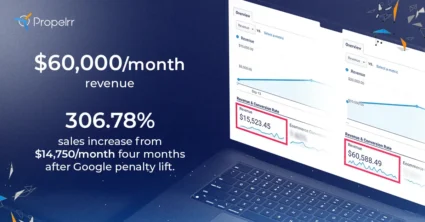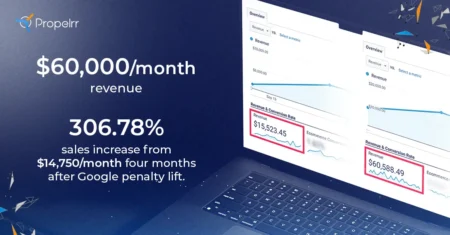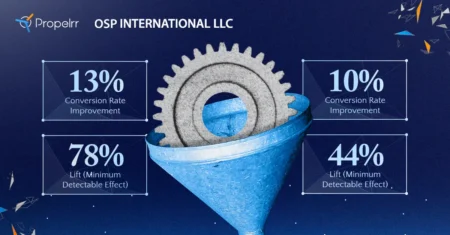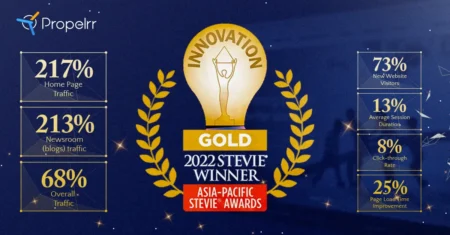It is no secret that more and more cases on lifting Google Penalty are being posted online serving as models for others to lift their website’s penalty. The number of tools and services on link cleansing is also on the rise. It is not surprising at all. One of the tools we’ve recently tested that sped up our process was the Monitor Backlinks by Razvan. It is a good tool! While our method on lifting Google manual penalty remains outstanding with 100% precision on all cases we’ve solved, there’s still a gray area that is not being directly addressed by many. That is, if traffic will be back or revenue will be better afterwards. It has always been assumed that traffic should be back. But the reality is, it is NOT always the case.
As such, this leads me to answer this question, What guarantee, after Google’s manual penalty revocation on website, that its traffic will be back on track or improve its revenue moving forward? My answer is NONE. There is no guarantee. Why? Let’s try to dissect some of the cases we’ve handled.
Case 1: A classic client who just wanted to remove its manual penalty.
With our proven track record on lifting penalties via link cleansing, a lot of companies are coming to us for help to remove their penalties. It is usually a done deal. Some would only want to have their links cleaned. That’s it. In some cases, traffic goes well after the lift but at times, they don’t. See the sample below when penalty is still imposed on the website until it was lifted on March 8, 2014.
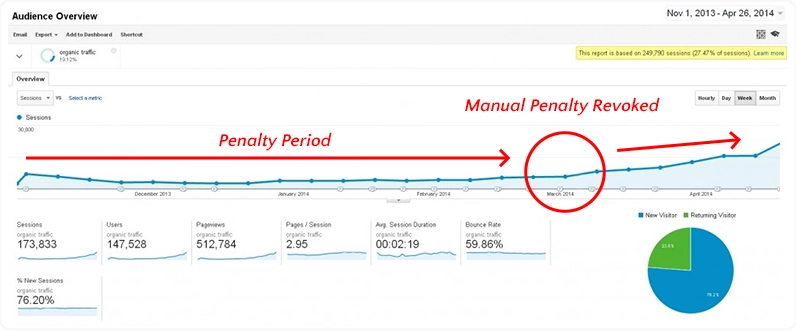
This client evidently improved its traffic after the penalty was revoked at face value.
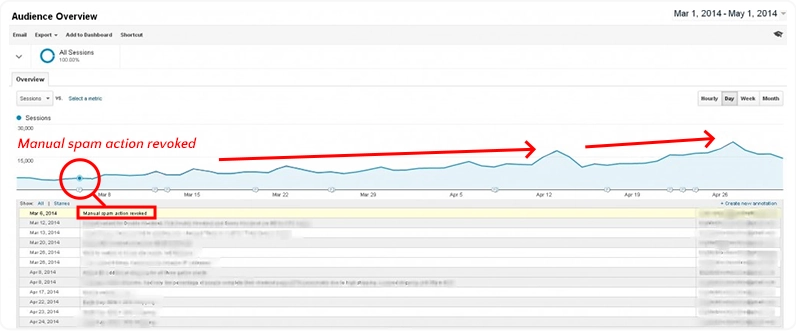
However; upon comparing its traffic and revenue last year, metrics are still way lower having in mind that all other outer factors remain constant. Worst, assisted and direct conversion values are down 46.06% and 63.61% respectively.
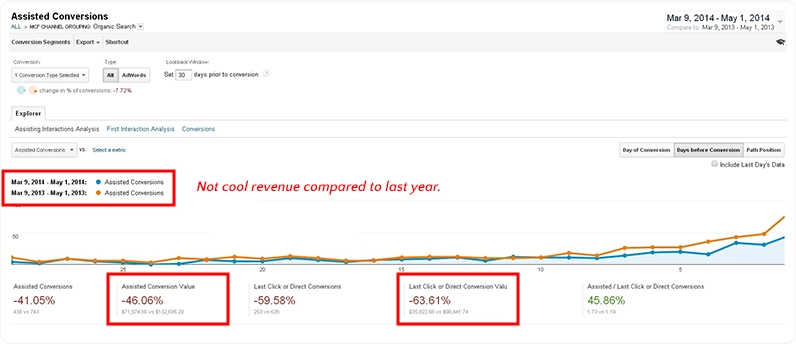
Why? Let me answer that after I present another case.
Case 2: One of the many clients that underwent full recovery from penalty.
After more than six (6) months of work, manual penalty was revoked on Oct 9, 2013.
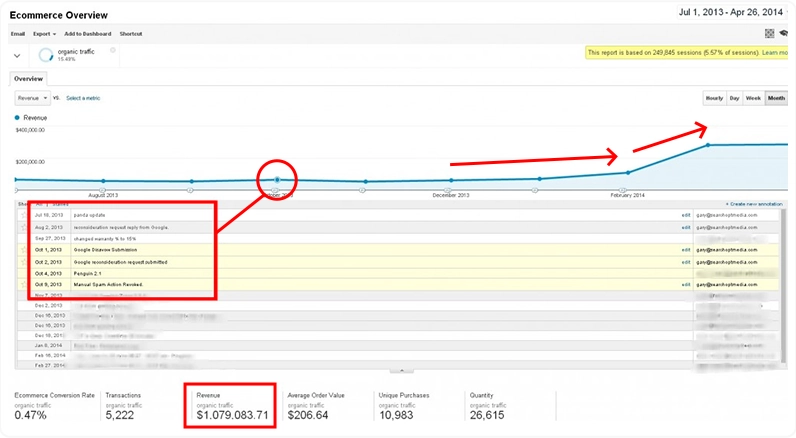
Comparing it to last year’s performance, traffic is much better as evidently shown below.
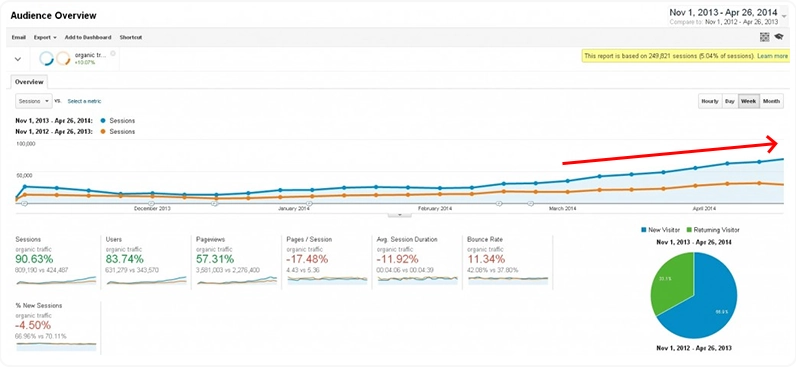
If you look at the e-commerce revenue from Organic Search, it generated $1,558,065.40 for both assisted and last click conversions.
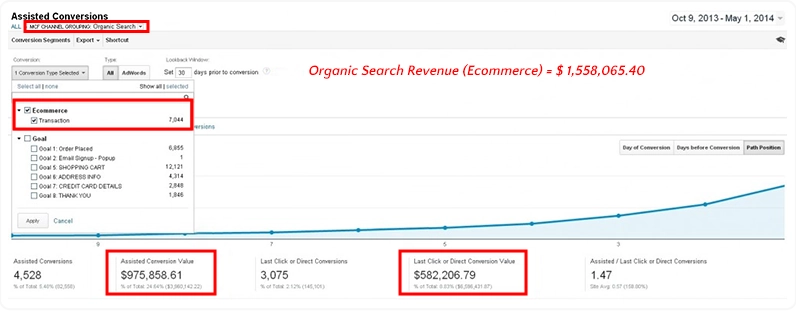
It generated $1,558,065.40 for both assisted and last click conversions.
On top of the increment on eCommerce revenue, there’s a delta change of 103.35% on assisted conversion value and 70.21% last click conversion value. It is a huge leap from last year’s revenue attributed to Organic Search alone. It is a whopping $735,854.02 value handed to the client just like that.
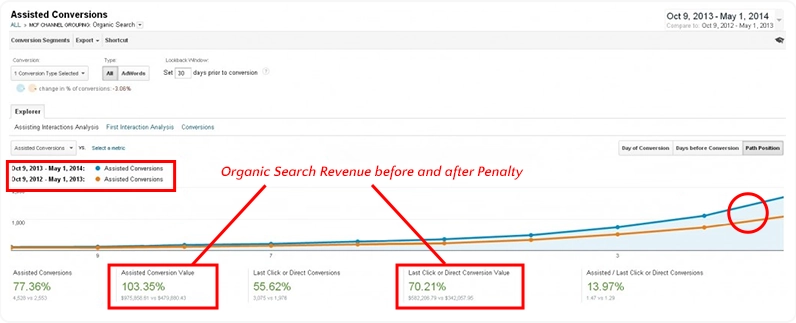
A whopping $735,854.02 value handed to the client just like that
So what’s the difference?Actually, it is pretty simple.
The first case simply focused on cleaning its backlinks and hoped that after the manual penalty revocation, all else will be go back to its normal traffic. The second case waited and understood that SEO and content marketing take time in putting together brick by brick the building blocks on becoming a formidable brand aside from simply pruning bad links.
The Key Takeaways
1. At the start of the engagement, let the client understands that link cleansing can remove them out of Google’s manual penalty, however; it is does not guarantee that their traffic will be back to normal.
This will save you a lot in compromising with your clients since most of them read many articles about successful websites’ recovery from Google manual penalty but the reality is, it has always been a case to case basis. There’s no guarantee like I mentioned awhile ago.
2. Link cleansing is just a subset of what needs to be done in order to completely recover from traffic and revenue losses.
3. Thorough assessment of links profile will let you determine the amount of damage on the website. More than 40% links to be removed will already tell you that the client is already on for a long period of time before it recovers.
So what do you need to shorten the road to recovery and to obtain faster upward traffic/revenue trend?
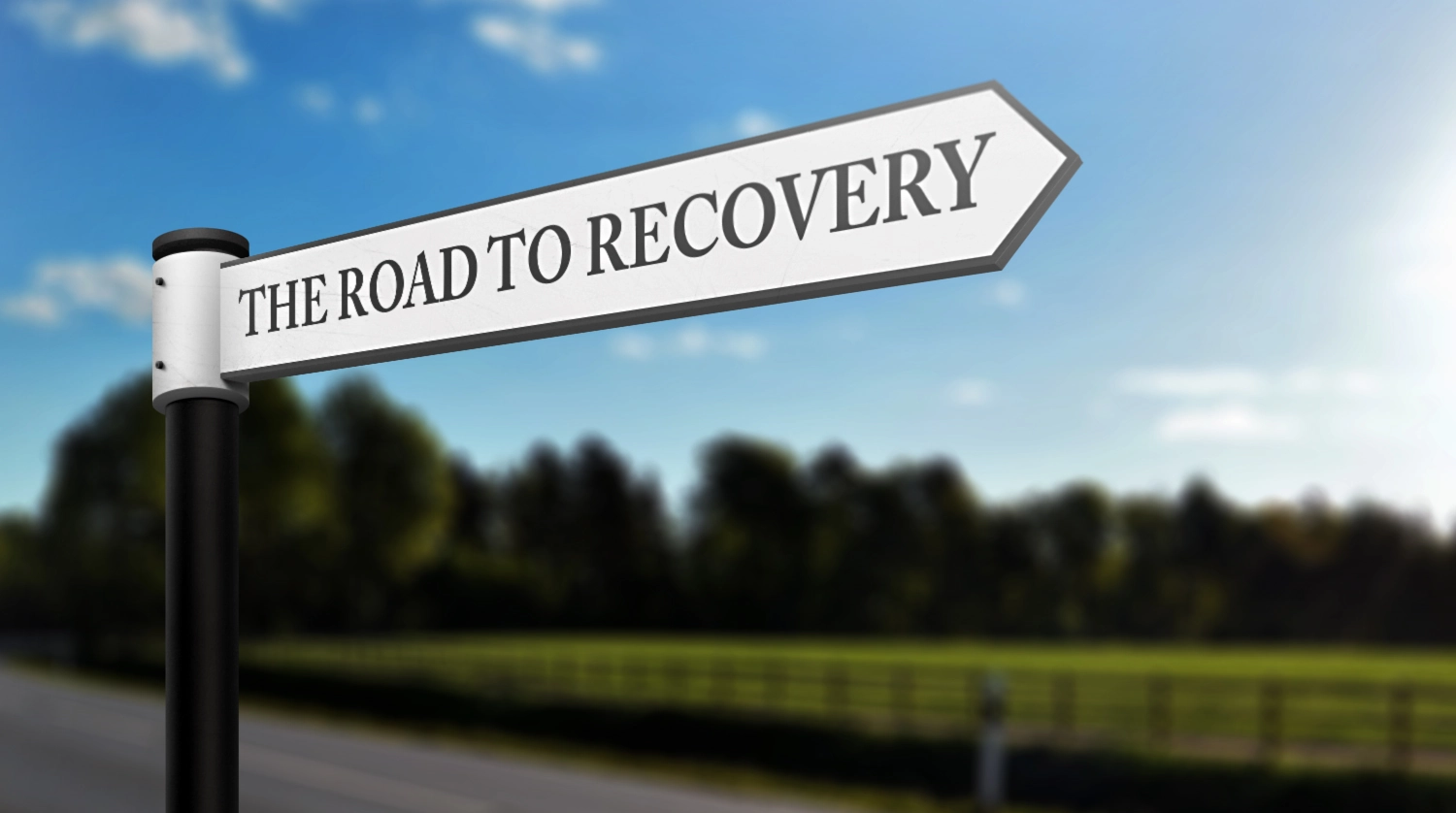
Here are my Pro-tips:
1. While link pruning does the job at a certain point, client must invest on improving UX and Conversion.
Below, look at the positive percentages leading to conversion when conversion rate optimization (CRO) was implemented properly on the website.
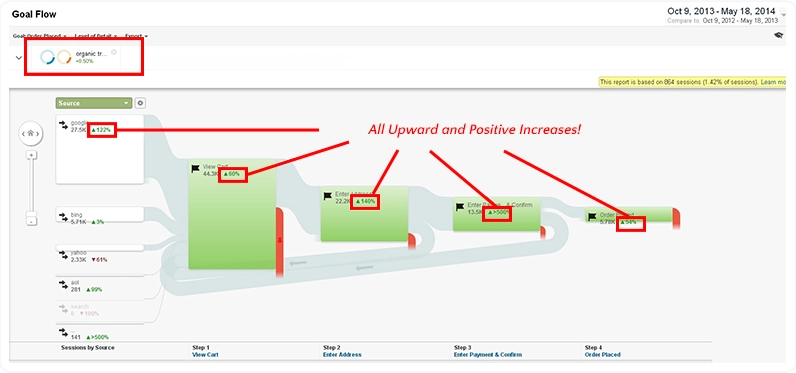
Here are good sources below on Conversion Optimization that can help you.
- The Beginner’s Guide to Conversion Rate Optimization
- 100 Conversion Optimization Case Studies
- 6 Of My All-Time Favorite Conversion Rate Optimization Case Studies
- Holy Grail of eCommerce Conversion Optimization – 91 Point Checklist and Infographic
- Everything You Know About Conversion Rate Optimization Is Wrong
- Paying for Traffic vs. Paying for Conversion Optimization
2. Address Thin Content.
With the second case I presented, audit on website’s User Experience (UX), identification of bottle necks in the Conversion Funnel (Yes! CRO), consolidation of redundant pages and ultimately, removal (or 301 redirection) of useless pages viewed as thin content were done. As a result, traffic increase on traffic every step of the way on the website’s landing pages were evident. See image below.
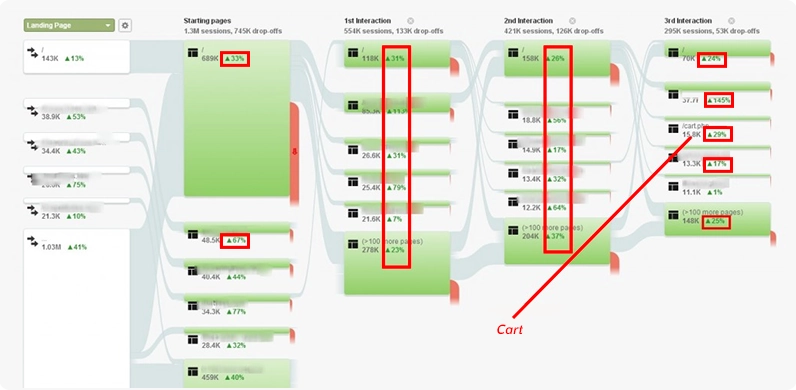
Pro-Tip: One simple step to consolidate pages is by going straight to Google Webmaster Tools (GWT). Drill down via Search Traffic> Search Queries > Click a keyword > Pages.
You may find those competing pages on SERP. You can consolidate these pages should you see redundant pages. This may result in higher Page Authority (PA) overtime too.
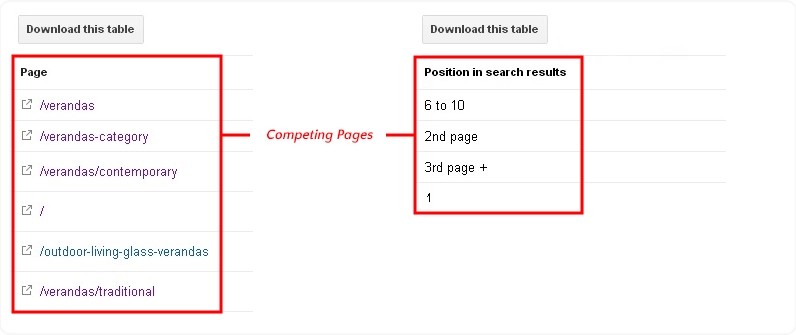
2. Build Digital Assets on the website from the very start of the link cleansing process.
In most cases we’ve handled that fully recovered, clients’ openness in tweaking their website is key to success. Building digital assets on the website that are themed and targeted to their audience should be of utmost priority. Variation of these content on the website gives you good leverages in reaching out target market with different degree of needs. Long-form articles, white papers, slides, blended form articles (a combo of infographics, GIFs , and texts) and lastly, interactive HTML5/CSS3/JQuery content were the most effective ones so far.
3. Content Promotion and Outreach.
While a certain part of your activity is about link removal requests, a lot of work is also dedicated in promoting content assets and targeted in engaging influencers via outreach and social media.
4. Monitor, Rinse and Repeat.
This item is a classic process. It is simple but effective. While you build your content editorial calendar based on your content marketing strategy, coming up with your customized benchmark worksheet to monitor organic traffic, referral traffic, goals, bounce rate, time on site, assisted and direct conversions, and links acquired paramount to your success moving forward.
5. If SEO and Content Marketing takes time, more so, Recovery from Penalty.
We could personally relate to what Rand Fishkin recently discussed via Whiteboard Friday regarding The Greatest Misconception in Content Marketing and What if Your Ugly Website is Holding Back Your Marketing Efforts? because these are the usual issues we encountered from clients wanting to recover from penalty. The use of influencers and users’ feedback works well when you are on the stage on convincing your clients. You need to remember that if your client’s website is hit, you are not starting from point zero but rather on the negative side of a line number graph.

Note: We have had a few clients who do not want to engage in SEO, CRO, UX audit and Content Marketing in order for their websites to improve. They only wanted their websites lifted from Google Manual Penalty by Link Cleansing. We have no issue with that, however; some of them fall on the case 1 I presented. While most of our clients who fully recovered are those that are open to changes and do not limit us only in link removal requests. It has always been a case to case basis.

